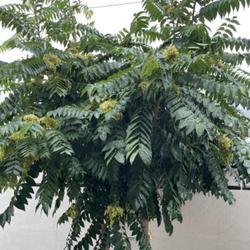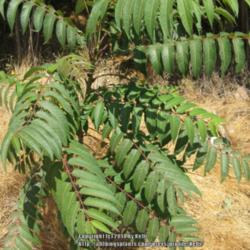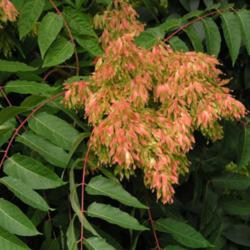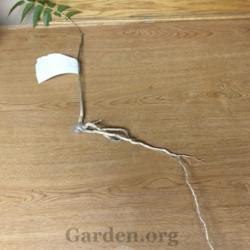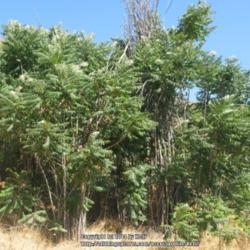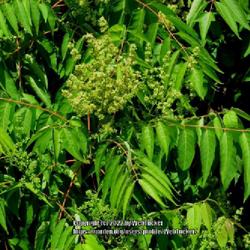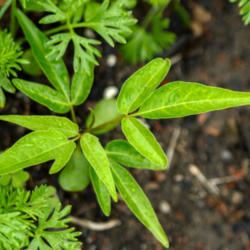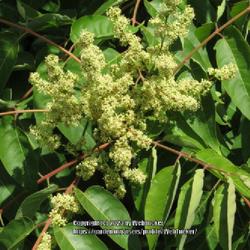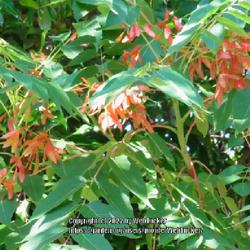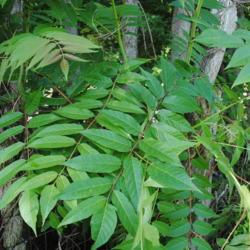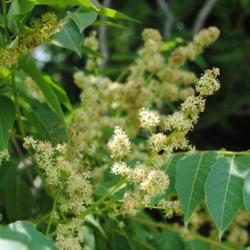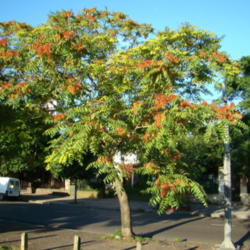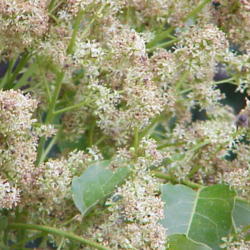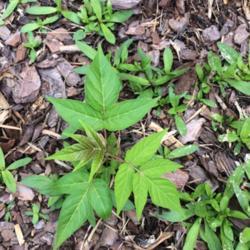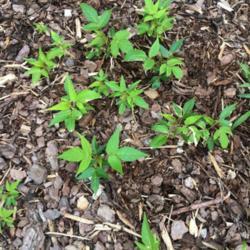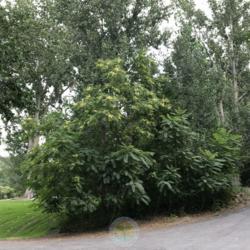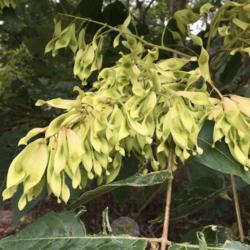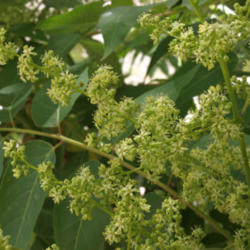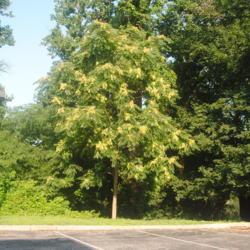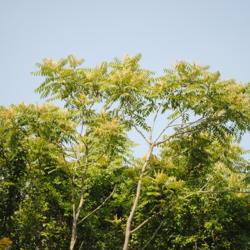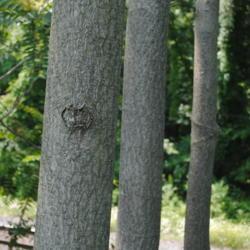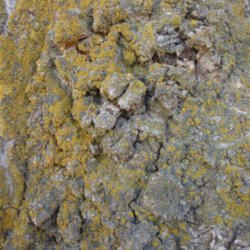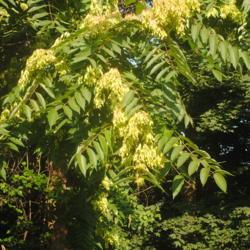Posted by
ILPARW (southeast Pennsylvania - Zone 6b) on Jul 27, 2019 2:12 PM concerning plant:
This Chinese Stinktree from China is almost always an invasive, aggressive weed tree in eastern North America. It got its name of Tree-of-Heaven from being able to grow on tough rocky mountain tops in China. It is abundantly common in many areas of the Midwest, Mid-Atlantic, and Northeast USA in tough dirty, polluted urban situations, including pavement cracks, to fields and edges of woods, often being part of a pioneer forest of other sun-loving, fast growing trees as Boxelder, Green Ash, Black Walnut, Black Locust, Catalpa, Common Mulberry, and such. It is very fast growing of about 3 to 5 feet/year, and should live less than 100 years. Its pinnately compound leaves are alternately arranged on twigs and get 1.5 to 2 feet long, even to 4 feet long, with 13 to 25, even to 41 leaflets that are arranged oppositely on the leaf stem (rachis). These leaves look similar to Staghorn & Smooth Sumacs and to Black Walnut. It has very stout, greenish twigs with large leaf scars, and the twigs are smooth, perhaps with some short downy hair, and the pith is yellow. When crushing foliage or cutting stems or wood, it emits a horrible, stinky odor that is like burned peanut shells or something very rancid. Ailanthus sap contains quassinoid chemicals that can cause people to have a headache, get nausea, or cause heart trouble. The bark is thin, relatively smooth, and brown-gray. The female trees bear large quantities of a winged samara seed that causes lots of sowing around. This species was first brought to America, to Philadelphia, Pennsylvania, by a gardener William Hamilton in 1784. (Part of the reason may have been besides a new tree was that it was mistaken to be good for the Silk Moth industry that was attempted in the 18th century, as an Ailanthus Silk Moth does feed off of it, though this second silk moth is not good for making silk.) Chinese immigrants brought seeds to the West Coast in the 1850's during the Gold Rush for some traditional medical uses. The newly introduced pest called the Spotted Lantern-Fly was accidentally introduced into southeast Pennsylvania in a shipment of decorative stones from China about 2014, and it uses this tree as its most important food source, before feeding off many other plants. Tree-of Heaven is a member of a large tropical family of plants of the Simaroubaceae and is very tropical-looking. I remember one woman who was a landscape designer who liked the appearance of this tree in the downtown of my home town in the Chicago, IL, area. I saw one planting of three trees in a large rectangular bed surrounded by cement in downtown Chicago and thought it was alright there. Usually I hate this plant! I have killed or powerfully damaged many trees that are not too big to handle. It has been found that Verticillium Wilt Disease, a native soil fungus, can kill this tree. It does not tolerate lots of shade. However, if Tree-of-Heaven is growing in a really dirty, foul, polluted site or in some landscape meant to look tropical, hopefully all male trees, then I am alright with it.
![Date: c. 1800-05
illustration [as A. glandulosa] by P. J. Redouté from Duhamel's
Date: c. 1800-05
illustration [as A. glandulosa] by P. J. Redouté from Duhamel's](/pics/2022-09-15/scvirginia/d2e1cc-250.jpg)
